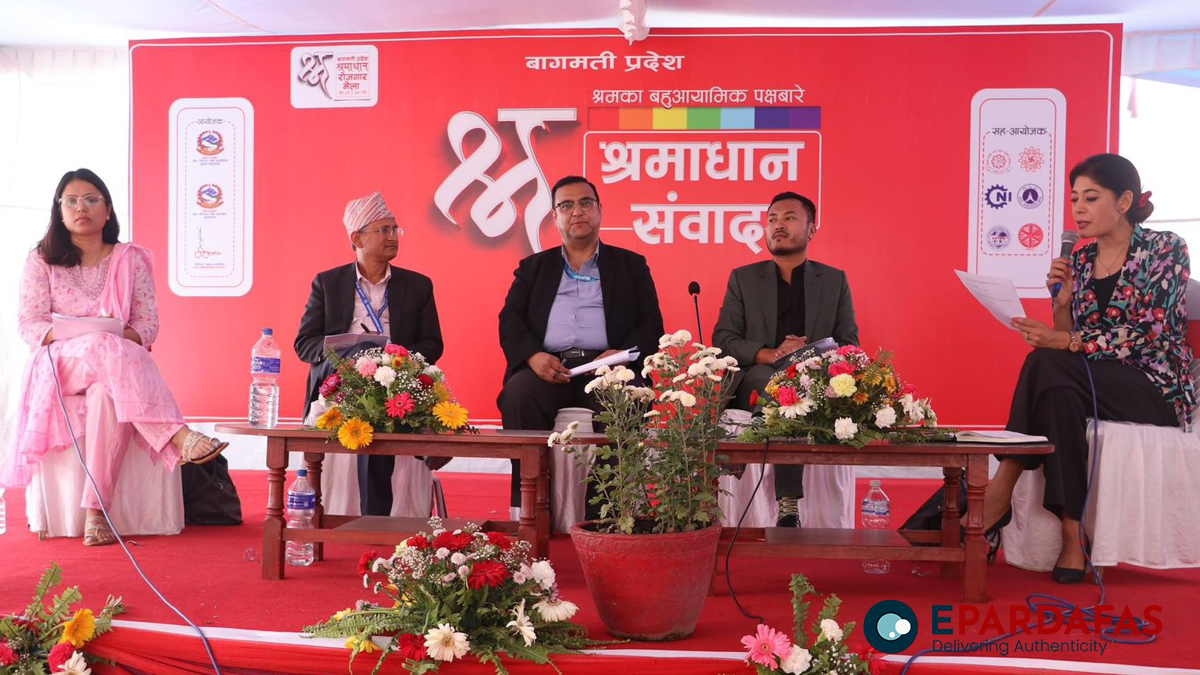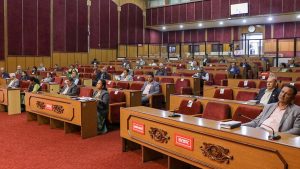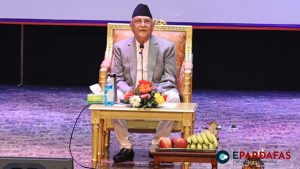Experts and child rights advocates have called for comprehensive and coordinated measures to effectively eliminate and prevent child labor in Nepal. The discussions took place during ‘Shramadhan Sambad’, a series organized by the Ministry of Labor, Employment and Social Security.
Participants emphasized the need for the government to take concrete steps to abolish child labor and safeguard child rights. Despite existing laws and regulations, the effectiveness of these legal measures remains questionable.
Ram Prasad Gautam, a child protection officer at UNICEF, stated that a strong commitment from the state is crucial for the effective implementation of legal provisions. He highlighted the importance of setting up structures, allocating sufficient resources, providing effective services, and introducing programs aligned with legal provisions.
Narayan Bhattarai, National Project Manager at the International Labor Organization (ILO), discussed major international instruments, including ILO Convention 138 on Minimum Age and Convention 182 on the Worst Forms of Child Labor. Nepal ratified Convention 138 in 1996 and Convention 182 in 2002, and signed the Convention on the Rights of the Child in 1990.
Bhattarai stressed the need to back these commitments with efforts such as eradicating poverty, ensuring quality education, and implementing social security measures.
Ayush Joshi, representing Save the Children, highlighted the necessity of social and political will for the effective implementation of plans and strategies. He called for greater collaboration with government agencies, stakeholders, civil society organizations (CSOs), media, academia, and children themselves.
Joshi emphasized that policies and plans must consider children’s lived experiences and ensure their voices are heard. He also pointed out the need to view policies from an intersectional lens, considering the vulnerability of children from underrepresented groups.
“Our approach to addressing child labor shouldn’t be siloed,” Joshi said. “We need to consider new trends such as children’s access to digital spaces and the far-reaching impact of climate change on child labor.”
The event highlighted the importance of inter-governmental and departmental coordination. Key agencies such as the National Child Rights Council, the Ministry of Labor, Employment and Social Security, the Ministry of Home Affairs, the Ministry of Women, Children and Senior Citizens, and the Ministry of Law, Justice and Parliamentary Affairs must work together to effectively monitor labor situations and mobilize resources for rescue and rehabilitation efforts.
Despite the government’s commitment to ending the worst forms of child labor, severe exploitation, including commercial sexual exploitation, persists in Nepal. Pragya Lamsal, Knowledge Sharing Manager at Adara Development, emphasized the vulnerability of children from families below the poverty line.
“Children often seek work to support their families when they face financial difficulties,” Lamsal said. She highlighted the need to address the interlinked causes of child labor and recognize its multidimensional nature for effective intervention.
The event underscored the urgent need for comprehensive measures and effective coordination among various stakeholders to eliminate and prevent child labor in Nepal. By addressing the root causes and ensuring the meaningful participation of children, Nepal can make significant strides toward safeguarding child rights and eradicating child labor.














Comments